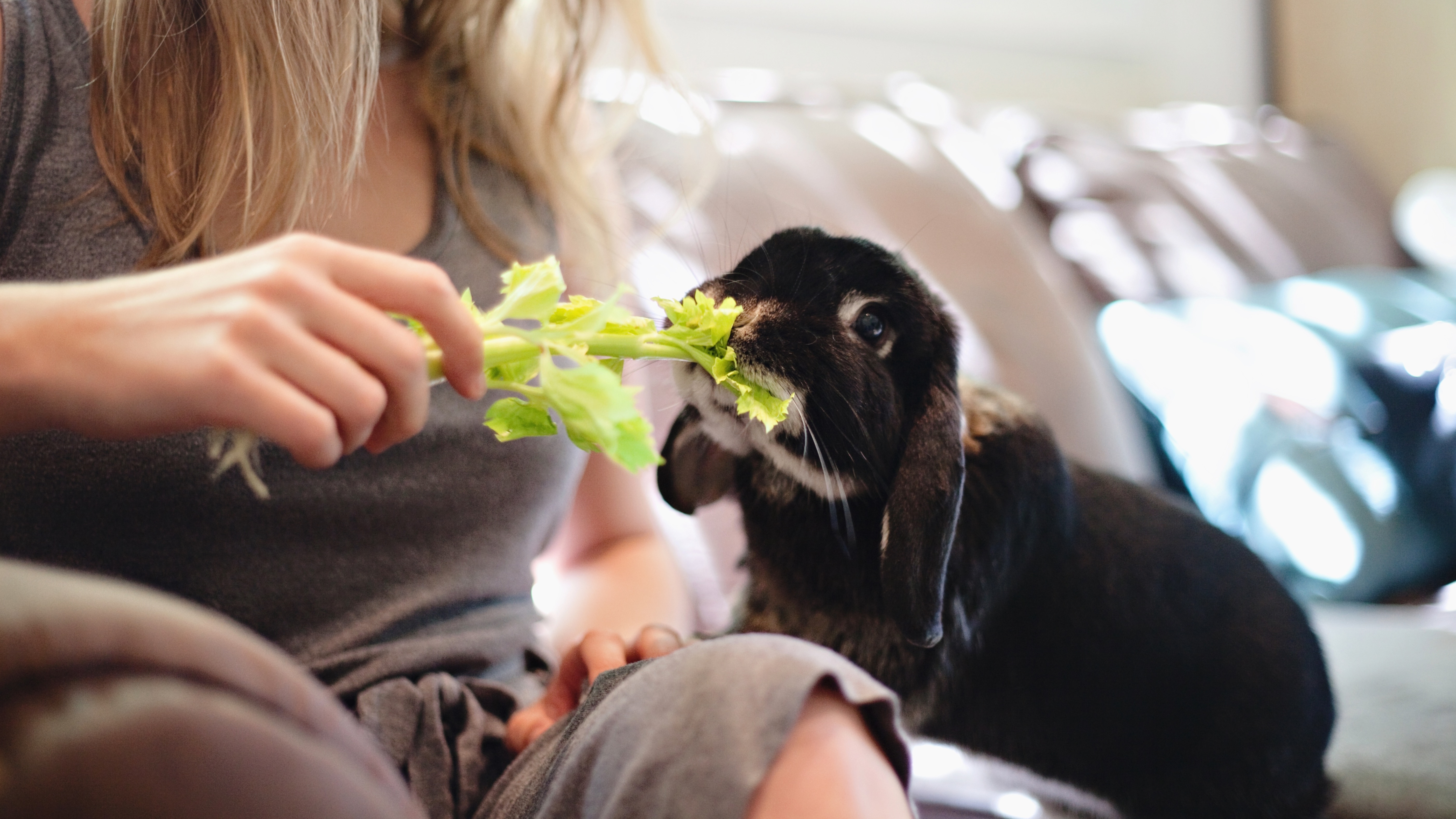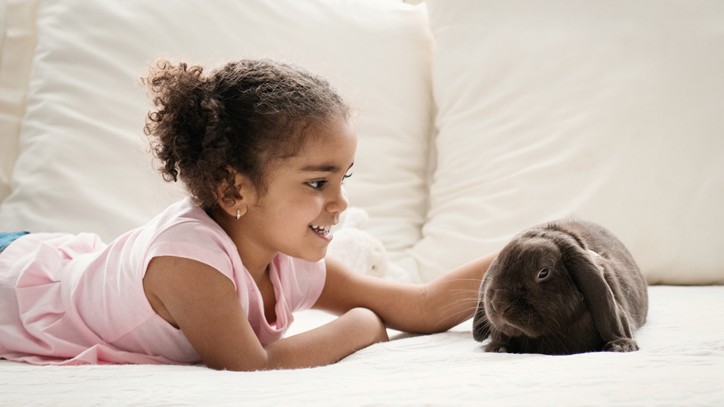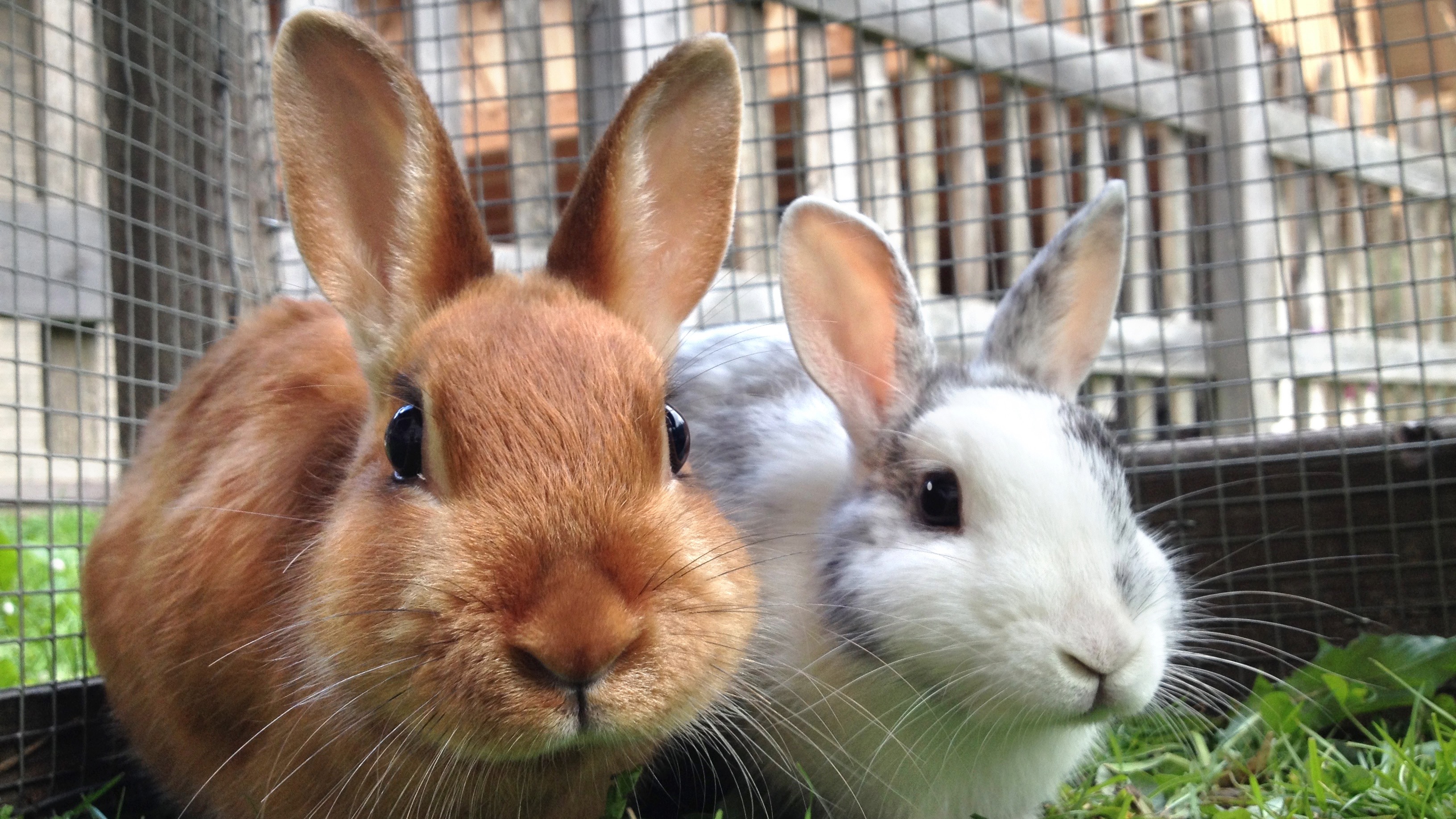
Considering getting a house rabbit? Or maybe you’ve already welcomed one into your family? Either way, you likely have lots of questions on how to care for a house rabbit, including everything from housing and diet, to litter box training and vet care.
While bunnies certainly look adorable, they’re actually not as straightforward to care for as you might think – and rabbits need a lot of space. Rabbits are quite complicated animals and require more than just the best indoor rabbit hutch to keep them happy and healthy.
That’s why we turned to expert vet Dr. Catherine Barnette. Below, she shares everything you need to know about caring for your indoor house rabbit, including what to feed a rabbit, what sort of enclosure to buy, and why you should consider adopting rabbits in pairs. So, without further ado, let’s hop to it!
1. Set up an enclosure
While some house rabbit owners allow their bunnies free range of a rabbit-proofed room or other portion of their home, most people house their rabbits in a hutch or rabbit pen, particularly when they are unsupervised. It’s important to purchase a large enough cage that your rabbit has room to move around freely. Your rabbit should be able to stand up on his hind legs, stretch out and hop about in it. The Rabbit Welfare Association and Fund (RWAF) recommend a hutch that is at least 3m x 2m x 1m high for rabbits that live indoors or outdoors.
Your rabbit’s cage should be located in a central area of the home because rabbits are social animals and thrive with at least some degree of human contact. At the same time, it’s best to place the cage in an area that isn’t subjected to frequent loud noises or drafts. The goal is to provide socialization, not to increase your rabbit’s stress level!
2. Provide a high-quality diet
Your rabbit’s diet should consist primarily of commercially-available rabbit pellets and fresh vegetables. Although young, growing rabbits may require larger quantities of rabbit pellets, adult rabbits are often prone to obesity and do best when fed just one to two tablespoons of pellets per day. For more advice read our five do’s and don'ts’ of feeding rabbits correctly.
Green leafy vegetables, such as washed dandelion leaves, mustard greens, and bok choy, are good vegetable options for rabbits. These vegetables provide vitamins, minerals, and fibre. In general, vegetables with high sugar or starch levels (such as carrots) should be avoided or only given as a very occasional treat.
When introducing any new vegetable, it’s best to introduce small quantities gradually, while monitoring for signs of diarrhoea. It can take some time for rabbits to adjust to new foods, so feeding new vegetables in large quantities can lead to gastrointestinal upset.
3. Give your rabbit access to fresh hay
In addition to high-quality rabbit pellets and fresh vegetables, your rabbit requires constant access to hay. Hay is probably the most important component of your rabbit’s diet and should make up 80-90% of their daily diet. It not only provides fiber that is necessary for digestion but also helps to keep your rabbit’s teeth worn down to a healthy length, reducing the risk of painful dental conditions. Young, growing rabbits can have alfalfa hay, while adult rabbits do best with good-quality timothy or grass hay.
4. Rabbit-proof your house

Your rabbit should be let out of his or her cage for at least a few hours every day, in order to exercise and enjoy a change of scenery. This means that you'll need to know how to bunny-proof a room. Crawl around your home, or the area in which you wish to confine your rabbit when he or she is out of the cage, and take a rabbit’s-eye view of any potential hazards.
Electrical cords are one of the biggest risks and could electrocute your rabbit if chewed (and rabbits love to chew!). Try and cover them in plastic sleeves or tubing, or pin them up well out of reach. Rabbits also tend to chew on baseboards, furniture, books, plants, and anything else they can find, so you may want to move objects to higher ground and/or cover anything that you don’t want to be chewed.
5. Train your rabbit to use a litter box
Once you know how to litter box train a rabbit, using a litter box inside the cage will significantly cut down on the amount of time you spend cleaning your rabbit’s cage every day. Using a litter box when your rabbit is outside his or her cage can help preserve your carpets and other flooring!
Be sure to use one of the best rabbit litter boxes and one of the best litters for rabbits – avoid clay-based or clumping litters that are designed for cats. Instead, use paper pellet litter or even shredded newspaper. Most rabbits will take to using a litter box rather readily. If not, you can place a few of your rabbit’s stool pellets in the litter box to help them get the message.
6. Provide plenty of physical and mental enrichment
Part of responsible rabbit ownership is preventing boredom in your pet rabbits. It’s easy for house rabbits to become sedentary and under-stimulated, leading to weight gain or behavioral issues. There are many things you can do to help keep your rabbits engaged and entertained.
Rabbits love to dig, so a tray filled with dirt or nontoxic sand can help your rabbit express that natural tendency. Rabbits also love to chew, so clipping some nontoxic branches from your backyard can provide a safe and low-maintenance chew toy for your pet rabbit.
Rabbits naturally enjoy hiding in burrows, so boxes with rabbit-sized openings can provide a place for your rabbit to rest or play. Placing shelves around your home that your rabbit can use as perches can help increase your rabbit’s exercise and activity levels. Take a look at our list of the best rabbit toys for some more ideas.
7. Consider getting two rabbits

According to the Animal Humane Society, one of the five freedoms of animal welfare is that species who live naturally in pairs or groups should be provided with the company. Rabbits in the wild live in extended family groups, and as such spend a lot of the day socialising, grooming and interacting with each other. Your house rabbit will be much happier housed with at least one other rabbit – keeping rabbits on their own, or with another species (like a guinea pig), is not recommended.
8. Find a knowledgeable rabbit vet
Like any other pet, rabbits require regular veterinary care, with vaccinations advised for even indoor bunnies. Your veterinarian is not only a resource to be used if your rabbit develops an illness. Instead, your veterinarian should see your rabbit for routine wellness visits, to monitor your rabbit’s overall health, assess the need for dental care, and monitor your rabbit’s diet and general care.
Much can be done for rabbits medically and surgically these days. However, advanced veterinary care comes at a cost so it may be worth considering pet insurance for your bunny.
While providing proper care for a house rabbit may sound a bit overwhelming, it’s important to think about everything that these pets can provide you in return for your efforts. Little rabbits have big personalities, bonding closely with their owners and providing steady companionship.







